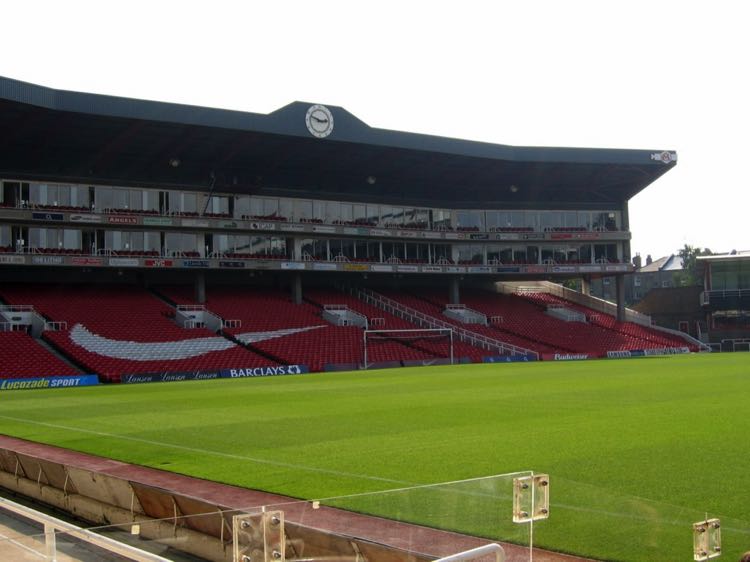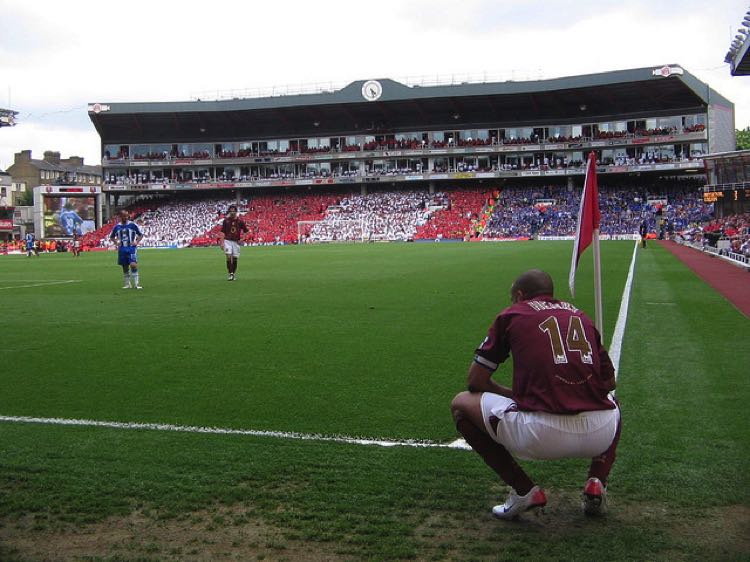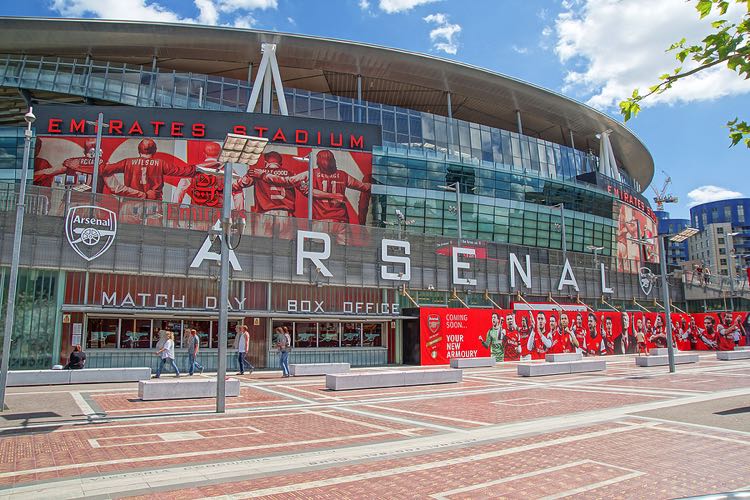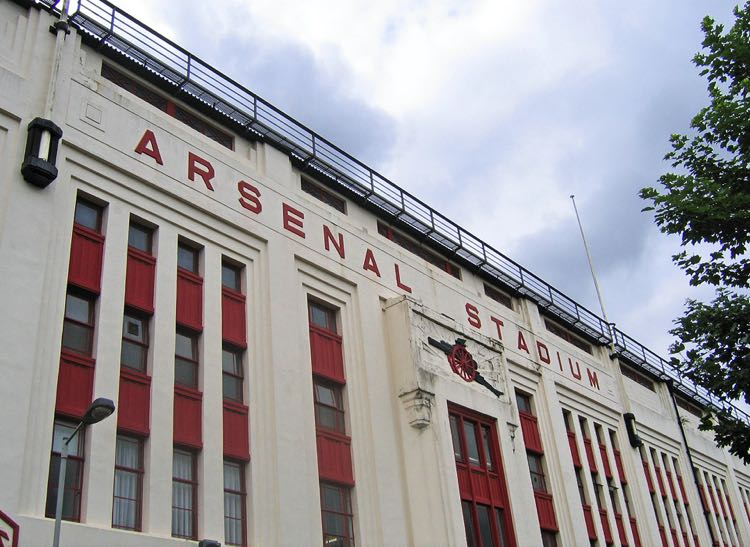Although the Emirates Stadium in Holloway has become synonymous with Arsenal FC with the ground welcoming around 60,000 fans every home game, this has only recently become the home of the club, relative to Arsenal’s long and distinguished history. The north London giants were previously based in Highbury, at a ground technically named the Arsenal Stadium but known popularly as Highbury, due to its location.
The Gunners played at Highbury for almost a century, with their first season at the ground in 1913/14 and their final campaign coming in 2005/06. However, Arsenal also previously played at the Manor Ground in Plumstead, southeast London, at which point they were named Woolwich Arsenal, but this stadium was eventually demolished as the club moved north, in order to combat the problem of low attendances.
When Did the Gunners Move to Highbury?

Arsenal moved to Highbury in 1913, when owner Henry Norris decided to make the move to north London and therefore had to find a suitable ground on which to play the club’s home games. After a brief search, he settled on the playing fields of a local school, St John’s College of Divinity, to serve as the new base for Arsenal Football Club. Norris secured a 21-year lease of six acres of land around the playing fields, paying a total of £20,000, which equates to around £2.5 million in today’s money so we’re sure this was a very popular decision in the school!
However, this move was enormously expensive for Norris, as he employed architect Archibald Leitch to design the stadium, who had previously designed stands for top teams, such as Liverpool, Manchester United and Chelsea. The stadium’s initial construction involved levelling the pitch, installing turnstiles and terracing and building a brand-new main stand, which was able to hold 9,000 spectators.
When the Gunners began playing at Highbury during the 1913/14 season, the stadium wasn’t completed, and the club was in Division Two. Furthermore, with the interruption of the First World War, it wasn’t until 1920 that the ground was able to host its first top-flight game, after some rather dubious dealings led to the Gunners being promoted from sixth in the second tier to the top division. Highbury also hosted its first international fixture in the same year, raising the ground’s profile significantly, as well as providing a boost in income.
Arsenal were eventually able to purchase the site in 1925, rather than having to continue to lease it, forking out another £64,000, which equates to around £4.1 million in today’s terms, in the process.
Growth of Highbury
After the club were able to purchase the site, they gained more freedom in developing it, as well as being able to bypass the previous agreement that they wouldn’t play games on certain special occasions, such as those of particular religious significance. The ground’s growth began in 1932 when a new West Stand was opened. The stand was designed by Claude Waterlow Ferrier, a Scottish architect, and was the most advanced of its kind that had ever been built in England, boasting 4,000 seats and a further capacity for some 17,000 standing spectators.
The ground had originally simply been named Highbury, yet this was changed to the Arsenal Stadium in the 1930s, although by that point Highbury had firmly stuck in the minds of fans. Further development occurred in 1936, when a new art deco-style East Stand was opened, housing 8,000 spectators, as well as containing the ground’s main entrance and the players’ facilities.
During the Second World War, Highbury served as a first-aid post and was the victim of German bombing, which unfortunately destroyed the roof of the North Bank, which wasn’t rebuilt until 1956. The north London ground was also used during the 1948 London Olympics to host some of the tournament’s football matches, further raising its profile on the international stage. The stadium continued to grow and develop over time, with floodlights added in 1951 and undersoil heating introduced in 1964. The West Stand was also further extended in 1969.
Modernisation & Final Years at Highbury

Over the years, Highbury continued to grow, with the Clock End Stand undergoing renovation in 1989, creating room for 48 new executive boxes. Furthermore, in 1991, Highbury began being converted into an all-seater stadium, removing its previously crowded standing sections but retaining an intimidating atmosphere for away teams and their supporters. The original stadium, as it wasn’t restricted by seats, could potentially hold 73,000 spectators at its peak, yet this was significantly reduced by this conversion. At its closure, the ground had a capacity of 38,500 spectators, achieved after a new North Bank Stand, which had 12,000 seats, was opened. This new stand also housed a new club shop and museum.
Modernisation continued with the introduction of electric scoreboards and gigantic screens placed around the ground, with the stadium remaining in this state until 2006, when it was eventually (largely) demolished as the Gunners moved to the Emirates, ending their near-hundred-year stint at the stadium. The final game at Highbury provided a fitting end to its illustrious history, in which Arsenal had won all of their English league titles, with a convincing victory over Wigan Athletic. Thierry Henry netted a hattrick as the north London side secured Champions League qualification, finishing in fourth place, a feat made even sweeter considering that it demoted north London rivals Tottenham to fifth spot.
Why Did Arsenal Move to the Emirates?

Although Highbury was a legendary stadium in English football, one that Arsenal fans affectionately called the “Home of Football”, it made more financial sense for the north London giants to move to a stadium that had a higher capacity and could also boost revenue by hosting concerts and other similar events.
The Emirates provided all of these financial opportunities but could never truly recreate the history and intimidating atmosphere of Highbury, with Arsène Wenger himself saying “we left our soul at Highbury”. The legendary manager went on to explain that this was partly due to security reasons as, at the Emirates, a larger distance was needed between the stands and the pitch to allow ambulances to enter the field. It is probably no coincidence that the Gunners have been unable to lift the Premier League trophy since leaving Highbury, as the club’s domestic success has dwindled at the Emirates.
Where Did the Club Play Before Highbury?
Although the club began playing at Highbury all the way back in 1913, Arsenal were actually formed almost 30 years earlier, in 1886, and began life as an amateur club with no official ground, when they were known as Dial Square.
Plumstead Common
The club’s first-ever game, in which they cruised to a 6-0 victory against Eastern Wanderers, was therefore played on a local field in the Isle of Dogs. However, this was quickly changed to another nearby field, known as Plumstead Common, which became the team’s home ground for the remainder of the 1886/87 season.
Sportsman Ground
For the next season, the Gunners moved to the Sportsman Ground, another nearby field, which they named after a nearby pub, the Sportsman. However, this field flooded, and the club were forced to move to, you guessed it, another field!
Manor Field
This one happened to be known as Manor Field, a name that was quickly changed to the Manor Ground – inventive, we know. The original Manor Ground had a famously muddy pitch and no stands, but this didn’t stop the club from having spectators, they just had to get imaginative. They therefore decided that instead of building stands, they could borrow wagons from a nearby military base, and use these to house fans; pretty genius if you ask us.
Invicta Ground
However, Arsenal then decided that actually they would like stands, so they moved to the Invicta Ground, which they leased, as it had stands and a terrace for spectators. They remained there for three seasons before the landlords put the rent prices up, and the Arsenal owners were having none of it, deciding instead to raise cash by selling shares in the club.
Spion Kop
The north London club were then able to use this injection of revenue from shares to purchase the Manor Ground and begin turning it into more of a “proper” stadium, adding state-of-the-art stands and even a terrace, which became known as the Spion Kop.
Despite these improvements in the stadium and the fact that the Gunners attained promotion to the First Division in 1904, the Manor Ground consistently struggled to fill its stands, leaving the club facing possible bankruptcy due to a lack of income. Situated in Plumstead, the ground was in an industrial area that had very few local residents and was therefore difficult for many to access.
Low Attendance Prompts Change of Location
In comparison to other teams, Arsenal had low attendances, with an average home game having a crowd of 11,000 spectators, paling in comparison to Chelsea’s 28,000. That is exactly why Henry Norris decided to move the club north, as there would be far more potential fans, a move that was highly successful, despite not being popular with Tottenham!

